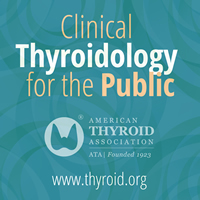Publication date: Available online 21 April 2018
Source:Acta Biomaterialia
Author(s): Zhuo Chang, Paolo Paoletti, Steve D. Barrett, Ya Hua Chim, Eva Caamaño-Gutiérrez, Maria Lyck Hansen, Hans Christian Beck, Lars Melholt Rasmussen, Riaz Akhtar
The collagen-rich adventitia is the outermost arterial layer and plays an important biomechanical and physiological role in normal vessel function. While there has been a lot of effort to understand the role of the medial layer on arterial biomechanics, the adventitia has received less attention. In this study, we hypothesized that different ultrastructural and nanomechanical properties would be exhibited in the adventitia of the internal mammary artery (IMA) in patients with a low degree of arterial stiffening as compared to those with a high degree of arterial stiffening. Human IMA biopsies were obtained from a cohort of patients with arterial stiffening assessed via carotid-femoral PWV. Patients were grouped as low PWV (8.5±0.7 ms-1, n=8) and high PWV (13.4±3.0 ms-1, n=9). Peakforce QNM Atomic force microscopy (AFM) was used to determine the nanomechanical and morphological properties of the IMA. The nano-scale elastic modulus was found to correlate with PWV. We show for the first time that nano-scale alterations in adventitial collagen fibrils in the IMA are evident in patients with high PWV, even though the IMA is not involved in the carotid-femoral pathway. Our approach provides new insight into systemic structure-property changes in the vasculature, and also provides a method of characterizing small biopsy samples to predict the development of arterial stiffening.STATEMENT OF SIGNIFICANCEArterial stiffening occurs as part of the natural aging process and is strongly linked to cardiovascular risk. Although arterial stiffening is routinely measured in vivo, little is known about how localised changes in artery structure and biomechanics contributes to in vivo arterial stiffening. This study focusses on the role of the outermost layer of arteries, the adventitia, in arterial stiffening. The study provides data on nano-scale changes in collagen fibril structure and mechanical properties in the adventitia and shows how it relates to in vivo stiffness measurements in the vascular system. This is the first study to link in vivo arterial stiffening with nanomechanical changes artery biopsy samples. Hence, this approach could be used to develop new diagnostic methods for vascular disease.
Graphical abstract
https://ift.tt/2Jhh9Ah




